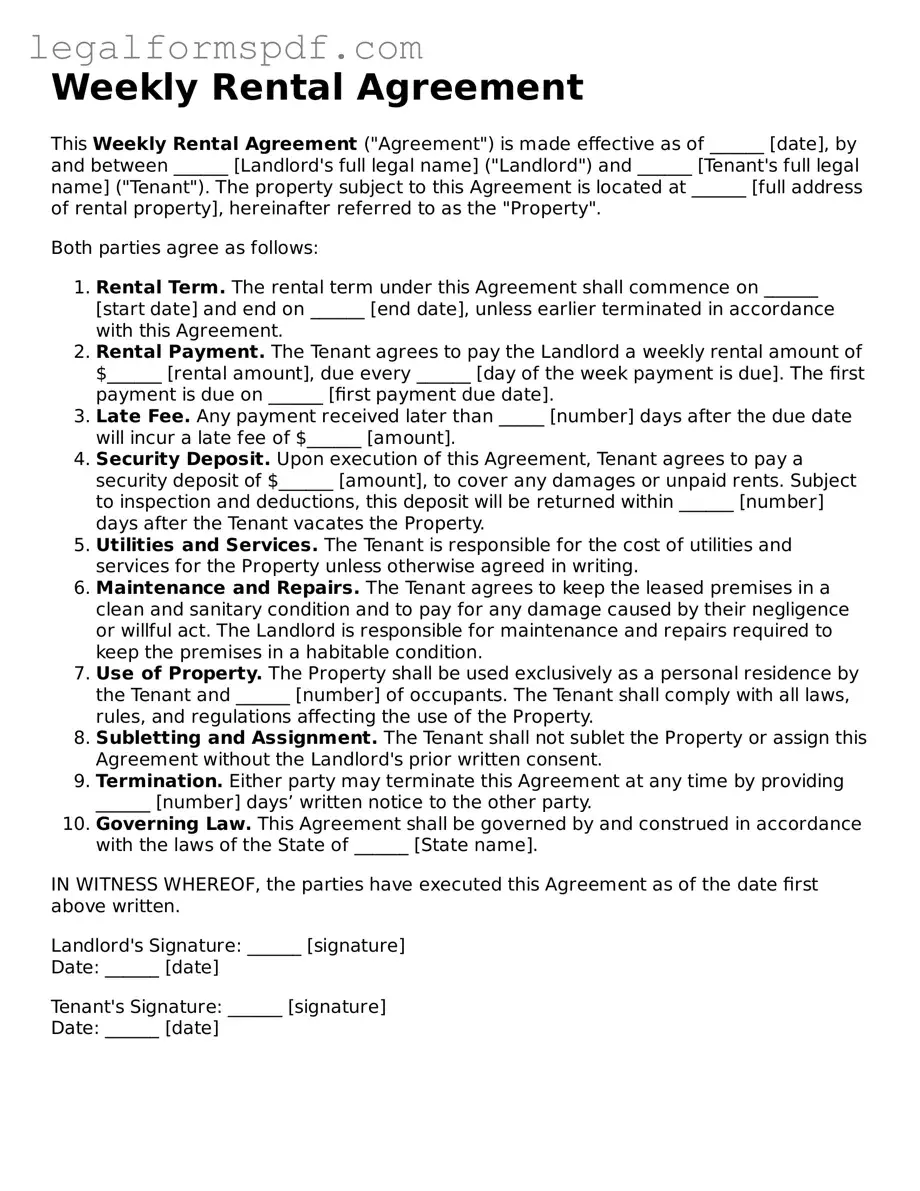What is a Weekly Rental Agreement?
A Weekly Rental Agreement is a legal contract between a landlord and a tenant that establishes the terms and conditions for renting property on a week-to-week basis. This type of agreement typically includes details such as rental amount, payment schedule, duration of the rental, and the responsibilities of both the landlord and the tenant.
Who should use a Weekly Rental Agreement?
This agreement is ideal for landlords and tenants who prefer the flexibility of a short-term rental arrangement. It is particularly useful for vacation properties, temporary housing needs, or for tenants who are uncertain about their long-term accommodation plans.
What are the key components of a Weekly Rental Agreement?
Essential elements of a Weekly Rental Agreement include the names and contact information of the landlord and tenant, the property address, weekly rent amount, payment due date, security deposit details, termination requirements, and any specific rules or regulations regarding the use of the property.
How does the payment process work in a Weekly Rental Agreement?
Rent is typically due on a specific day each week. The agreement should outline the amount, the acceptable payment methods (e.g., cash, check, online payment), and any late fees or penalties for missed payments. It's crucial both parties understand and agree on these terms to avoid disputes.
Can a Weekly Rental Agreement include utilities?
Yes, the agreement can specify whether utilities are included in the weekly rent or if the tenant is responsible for these payments separately. If utilities are included, the agreement should list which services are covered (e.g., electricity, water, internet).
What happens if either party wants to terminate the agreement early?
The agreement should clearly outline the termination policy, including how much notice the landlord or tenant must provide to end the rental arrangement early. Typically, either party can terminate the agreement with one week's notice, but this can vary based on mutual agreements.
Is a security deposit required in a Weekly Rental Agreement?
While not always mandatory, a security deposit is commonly requested by landlords to cover any possible damage to the property or unpaid rent. The agreement should detail the amount, the conditions for its return, and any reasons part or all of it may be withheld at the end of the rental period.
How are repairs and maintenance handled?
The agreement should specify the responsibilities for regular maintenance and repairs during the rental period. Often, landlords are responsible for major repairs and maintenance, while tenants may be responsible for keeping the property clean and reporting any issues promptly.
Can the agreement be modified?
Yes, any changes to the original agreement should be made in writing and signed by both parties. This ensures that any amendments, such as changes to the rental amount or rules regarding pets, are officially agreed upon and enforceable.
